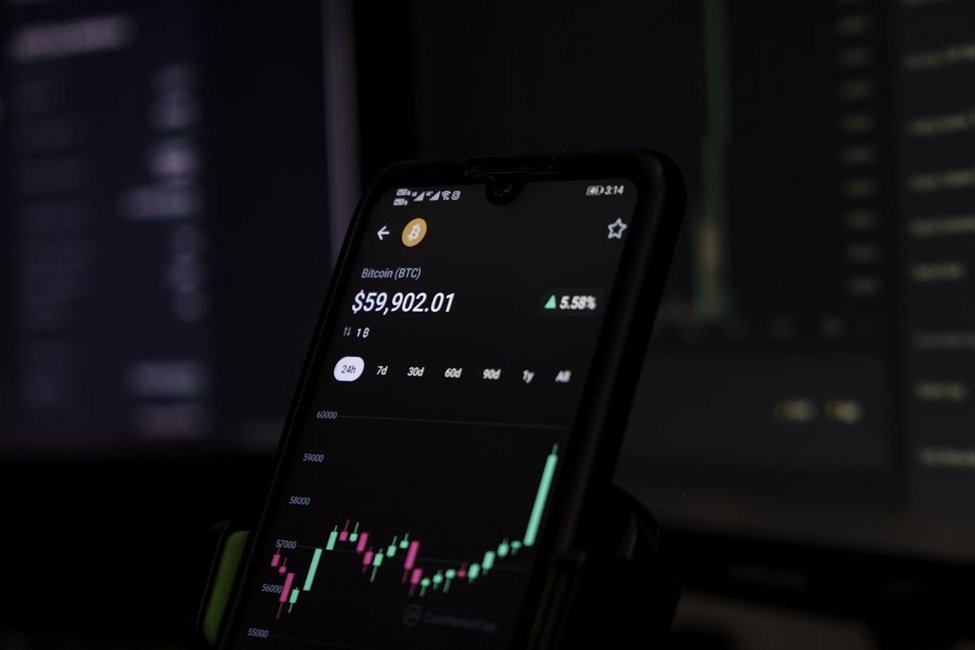Cryptocurrency for Beginners: Your Ultimate Guide
Gone are days when exchanging an old dollar note for an equivalent amount in the Rouble or the Pound was a troublesome affair. Today, the world has moved from fiat paper-based currencies to digitized ones, the cryptocurrency, that are encoded on the blockchain network.

Source: Unsplash
Within a short time span, these cryptos has gained traction on a global scale. They are often touted as the benchmark of a decentralized ecosystem that does away with the tight grip of central financial agencies and makes financial transactions safe, transparent and efficient.
Cryptos are not just easy to use currencies but they are universal in nature. They can readily be accepted in those economies where the native currencies are unstable. Further, they are more than mere currencies as they are assets whose value keeps appreciating and which can be redeemed for a higher value. For instance, Bitcoin, which started in 2009, is today valued at $60000.
A lot is heard and talked about cryptos in general and Bitcoin in particular, but these digitized currencies are still a myth for a large section of the non-tech-savvy public. So here this particular blog post will help demystify cryptos and open up the world of blockchain-based tokens that are rapidly revolutionizing the world. The blog post will talk about different types of cryptocurrencies.
Your Cryptocurrency Guide
As has been explained earlier, cryptocurrencies are transacted on a blockchain background. Every transaction on such a network is safe, secure and decentralized. Each transaction on that block is encrypted, and all the transactions happen post-peer review, leaving no room for fraudulent transactions. Hence, if you are to broadly distinguish between traditional and digital currencies, they can be differentiated on the basis of the level of security that they have to offer and the decentralization of the system.
How Does Cryptocurrency Work?

Source: Unsplash
Today, cryptos are gaining global acceptance, with companies like PayPal and Tesla legitimizing the acceptability and the existence of these currencies. Moreover, countries like El Salvador have accepted these currencies as their legal tender. However, before learning more about the greater acceptability of these currencies, you must understand what cryptocurrencies are and how to start with cryptocurrency.
Cryptos like Bitcoin are generated as and when miners unlock a new block. Cryptos like Bitcoin are limited in number; hence, the complexity increases for the miners as more and more blockers get created. Miners use super powerful computers to solve complex mathematical problems in the process using Gigabytes of energy, hence attributing a negative environmental cost to Blockchain mining.
Moreover, blockchains operate on consensus, and it is the responsibility of each blockchain node to ensure that each and everyone on the network adheres to the preset consensus mechanism. The nodes verify and approve every transaction on the chain.
Finally comes the crypto wallet, which crypto owners use to store and transfer these currencies. These digital wallets are protected by keys: public or private. A public key is a cryptographic code that generates a wallet address that is used to receive crypto funds and interact with decentralized Apps ( dApps). Since the key is public, it can be shared with all. On the other hand, there are private keys that run a digital signature and are not meant to be shared with others.
Various Types of Cryptocurrencies
Bitcoin was the first popular crypto that, in a way, made cryptos a household name. Often touted as an alternative to traditional finance, Bitcoins suffered from several disadvantages like their limited number (21 million), which created ever-increasing inflationary pressure as more and more blocks got mined. Moreover, the underlying architecture of Bitcoin had certain inherent limitations that lowered the speed of transactions and adversely affected user experience. As a result, alternatives like Ethereum and Solana developed.
Ethereum, unlike Bitcoin, comes with an unlimited supply, whereas Solana is much more centralized than the Bitcoin architecture but uses the history consensus mechanism and improves network speed to a great extent.
Then came the era of stablecoins, whose values remain stable in volatile market conditions. The stability in these coins is achieved by pegging the value of these coins to another external reference like the US Dollar or gold reserves. Then there came utility coins, which remain in their own blockchain but offer products/services that the specific coin-generating company is working on.
Finally, there are meme coins pioneered by Shiba Inu and now the ever-popular DOGE that started as a joke but now has many of which are valued close to a US Dollar.
All the cryptocurrencies discussed above, Bitcoin, Solana, and DOGE, are all examples of beginner-friendly cryptocurrencies to invest in.
Benefits of Cryptocurrency
Benefits of Cryptocurrency
Now that you know about thecryptocurrency basics, you may delve deeper into the advantages that they offer and the risks that they suffer from. The wider acceptability of cryptos is because of the advantages that they have to offer, and some of them are listed briefly here
- Decentralization and user autonomy
- Low-cost, fast international transactions.
- Transparency and immutability via blockchain.
Risks and Challenges

Source: Unsplash
Cryptos are useful, but there are risks and challenges as well. So here are some potent cryptocurrency risks
- Volatility and market unpredictability affect players in the crypto market
For instance, Bitcoin was poised to reach an all-time high ever since Thanksgiving 2024, but several challenges, including whale movements and supply side shocks, kept the ATH at bay and forced many small players out of the market before the time was ripe. So, investing in cryptosis never devoid of risks.
- Security concerns
Scams and frauds are prevalent in the crypto market, from false coins that end up in a rug pull situation to crypto exchanges that do not deliver. Crypto players need to be wary of the security of the funds that they invest in cryptos
- Regulatory uncertainty across regions
The Trump administration is favorable towards cryptos, meanwhile rising powers like China and India are apprehensive of it. So, despite the global reach of cryptos, regulatory challenges often hinder the penetration and utility of these coins.
Getting Started with Cryptocurrency: Cryptocurrency Basics
Crypto usage and the use of buying and selling them varies between experienced people and beginners. This paragraph tells you how crypto work for beginners
- Step 1: Choosing a reliable exchange (e.g., Coinbase, Binance).
- Step 2: Setting up a wallet (hot vs. cold wallets). Hot wallets are connected to the internet, whereas cold wallets are those that are not connected to the internet and are useful for long-term crypto storage.
- Step buying and selling cryptocurrencies. All blockchain users directly buy and sell from their DeFi wallets. When selling cryptos, the amount will usually be remitted in currencies such as Dollars, GBP etc.
- Step 4: Tips for securing your crypto assets. Usually, 2FA, which is two-factor authentication, is a way to ensure the safety of your wallet. Apart from these hard wallets, a USB drive, which is a physical medium for storing data instead of digital ones, can also be used. Usually, these hard wallets also store a private key to a wallet and hence act as proof of ownership for the asset.
Common Terminology Every Beginner Should Know
Now that you know the basics of cryptos, here are some common terms that the crypto world uses frequently.
Cryptocurrency basics demystified
- Altcoins- Any other blockchain-based coin apart from Bitcoins is known as an altcoin.
- Gems- Crypto coins, be it altcoins or memecoins, whose price is expected to rise in the near future; hence investing in them will be a profitable venture.
- NFTs- Non-fungible tokens are blockchain-based storage of art, games and other creative concepts. The blockchain background makes them fungible, meaning that they are unique, and their presence on blockchain makes them immune to mutation.
- Staking– Just like storing money in a savings bank account generates interest, similarly, staking cryptos in a wallet generates returns in proportion to the quantity and the value of the crypto that is staked. However, before you can learn more about staking or buying more cryptos, you must learnhow to choose the right crypto exchange.
Future of Cryptocurrencies
Simply put, the future of cryptos and blockchain-based technologies is bright. From decentralized finance that operates using a smart contract to Web 3, the next generation of Internet based on blockchain, the opportunities for the future are immense. In short, it would not be wrong to say that next-generation technology like AI, Blockchain, and virtual reality will cross paths and shape the future of global technology.
Final Tips for Beginners
Cryptos are profitable, and investing in them is a good proposition, but at the same time, they are volatile and come with regulatory challenges and ambiguities. So, as a beginner, invest small and thorough research on the value, volatility, and authenticity of the crypto that you invest in.
Stay updated with market developments, follow the whales or start by checking out tutorials for a step-by-step guide to cryptocurrency investing and make the most of your investment.
So, what are you waiting for ….start your crypto journey today!